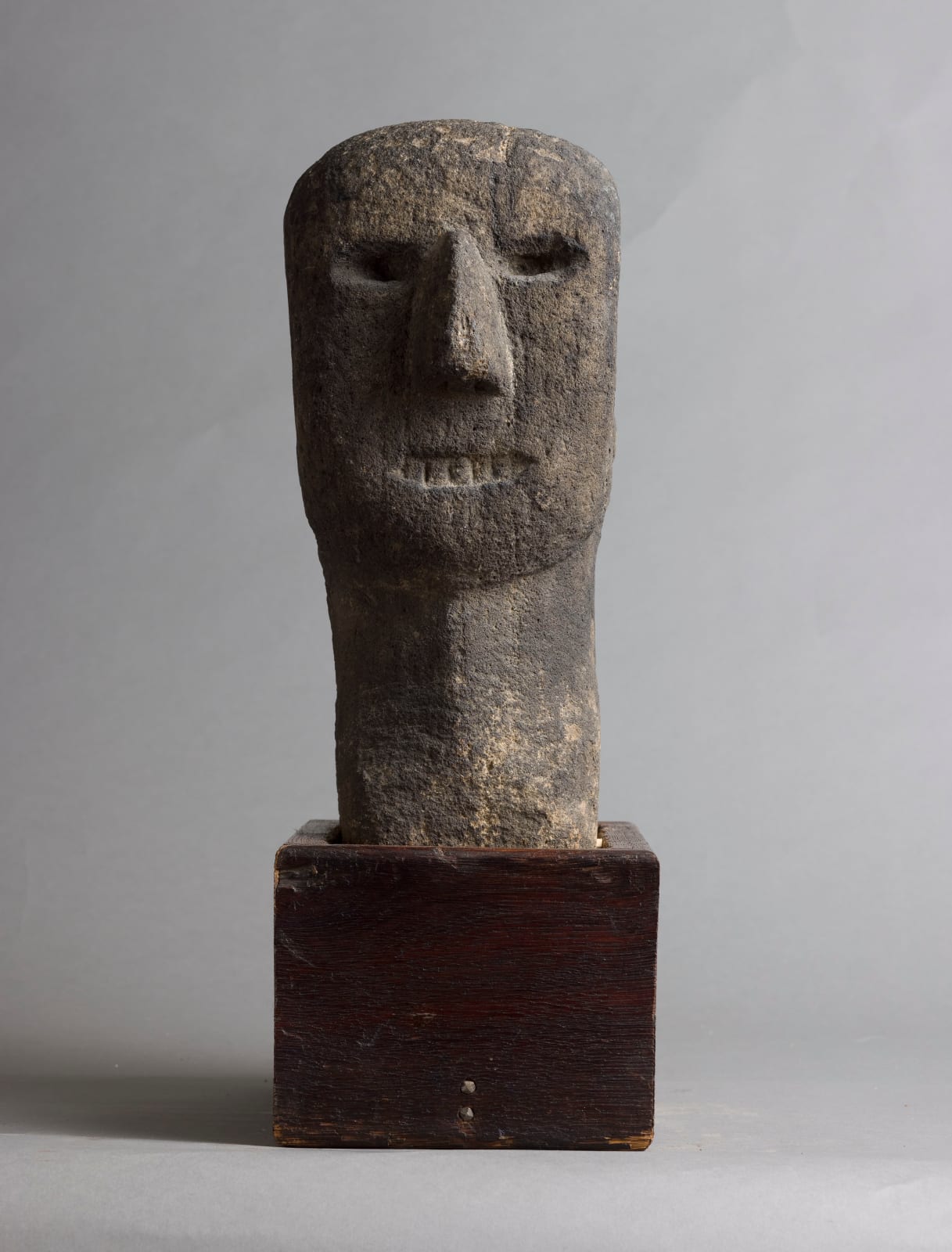Celtic British Sandstone Head (Yorkshire), c.3rd Century B.C.
carved sandstone with oak base with forged nails, c.18th Century
h: 16 in / 39 cm
It is well known that among the Vikings were bands of Berserkers, famed for their ferocity and violence.
‘This fury, which was called berserkergang, occurred not only in the heat of battle, but also during laborious work. Men who were thus seized performed things which otherwise seemed impossible for human power. This condition is said to have begun with shivering, chattering of the teeth, and chill in the body, and then the face swelled and changed its colour. With this was connected a great hot-headedness, which at last gave over into a great rage, under which they howled as wild animals, bit the edge of their shields, and cut down everything they met without discriminating between friend or foe. When this condition ceased, a great dulling of the mind and feebleness followed, which could last for one or several days.’ Fabing, Howard D., 1956, ‘On Going Berserk: A Neurochemical Inquiry’. Scientific Monthly 83 ((5): 232–237).
Less well known is that the Celts of Great Britain had similar fraternities dedicated to extreme violence, for whom battle was the purpose of life, and whose refinements of slaughter will haunt the imagination of anyone rash enough to enquire into them. In Ireland such people were known as the fian. The expression of fierce aggression on this face suggests that it celebrates one such person.
‘This fury, which was called berserkergang, occurred not only in the heat of battle, but also during laborious work. Men who were thus seized performed things which otherwise seemed impossible for human power. This condition is said to have begun with shivering, chattering of the teeth, and chill in the body, and then the face swelled and changed its colour. With this was connected a great hot-headedness, which at last gave over into a great rage, under which they howled as wild animals, bit the edge of their shields, and cut down everything they met without discriminating between friend or foe. When this condition ceased, a great dulling of the mind and feebleness followed, which could last for one or several days.’ Fabing, Howard D., 1956, ‘On Going Berserk: A Neurochemical Inquiry’. Scientific Monthly 83 ((5): 232–237).
Less well known is that the Celts of Great Britain had similar fraternities dedicated to extreme violence, for whom battle was the purpose of life, and whose refinements of slaughter will haunt the imagination of anyone rash enough to enquire into them. In Ireland such people were known as the fian. The expression of fierce aggression on this face suggests that it celebrates one such person.
Provenance
Oliver Hoare, LondonJoin our mailing list
* denotes required fields
We will process the personal data you have supplied in accordance with our privacy policy (available on request). You can unsubscribe or change your preferences at any time by clicking the link in our emails.
